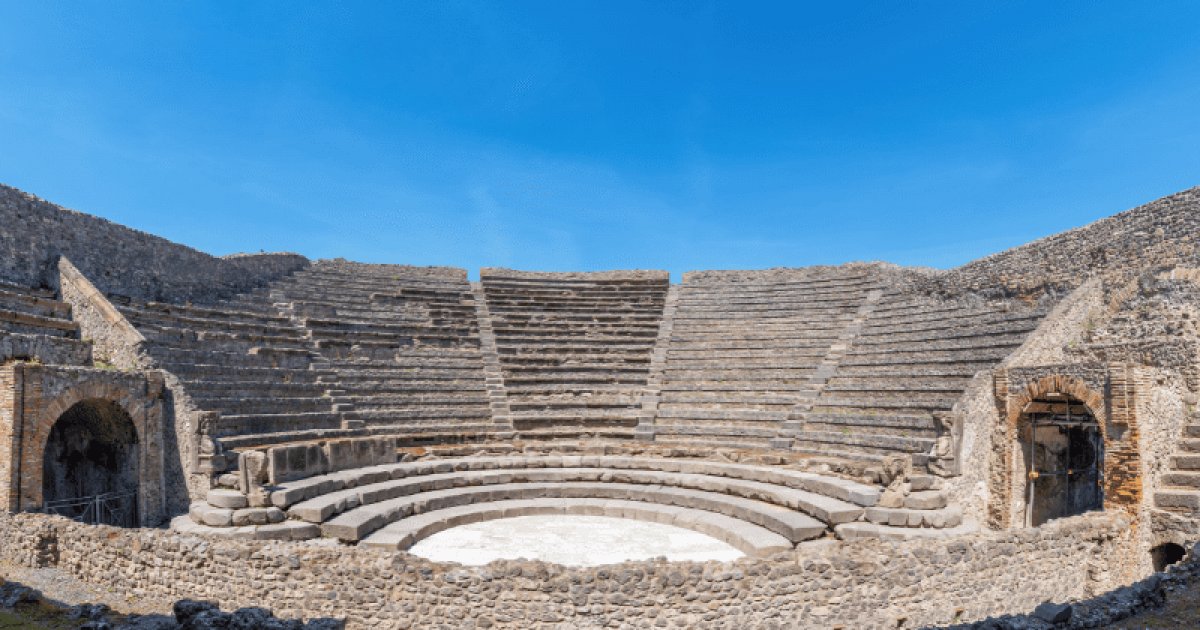AMPHITHEATRE-REGIO II, Amphitheatre-Regio Ii
 Language: English / USA
Language: English / USA
The Roman amphitheater of Pompeii, built in 70 BC, is by far the oldest of those discovered to date.
Elliptical in shape, with a length of 135 meters and a width of 104 meters, it could accommodate up to 20,000 spectators, protected from sun and weather by an imposing roof, the velarium.
Precisely because of the great influx of people who also flocked from neighboring towns and cities to attend circus and gladiatorial shows, the building was constructed in a peripheral area of Pompeii.
Below the bleachers ran a gallery with four entrances, two of which led directly into the arena. Those who sat in the upper stands instead accessed it via the double flight of stairs that can be seen outside.
Inside, spectators were divided according to social class and there was a specific sector reserved for women.
Unlike other Roman amphitheaters, this one did not have the typical dungeons where ferocious beasts were kept before arena fights. It is therefore assumed that animal fighting was not frequent but was certainly part of the games, as evidenced by the paintings found in 1815.
In fact, you should know that during excavations in the 19th century, some expert draughtsmen were commissioned to reproduce the frescoes as soon as they were found, in order to catalogue them.
Ten panels were made of the amphitheater, thanks to which the appearance of these masterpieces is still known today, despite the detachment and collapse of the paintings in 1816.
In fact, the entire balustrade at the base of the arena, a full 160 meters long and more than two meters high, a total of 345 square meters, was decorated with geometric motifs and scenes of fights between beasts and between gladiators, with yellow and red predominating.
Next to the amphitheater, I also recommend a visit to the Palestra Grande, a large square piazza measuring 140 meters on each side, in the center of which was a 35-metre long and 23-metre-wide swimming pool, where sports were played.
The piazza was bordered by a wall along which ten gates opened, surrounded on the inside by a columned portico shaded by a double row of tall plane trees.
Here’s an interesting fact: In 59 AD, the Senate of Rome banned the gladiatorial games in the amphitheater of Pompeii for ten years because of a brutal clash between local supporters and those from Nocera that resulted in deaths and injuries.



